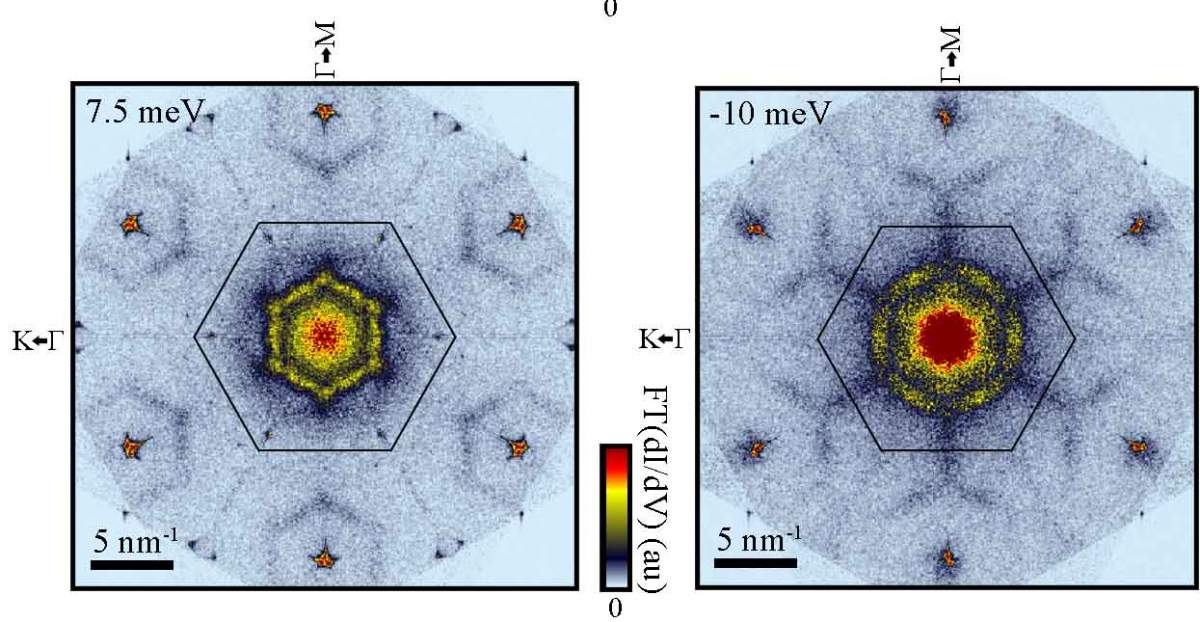עיתונאיות ועיתונאים, הירשמו כאן להודעות לעיתונות שלנו
הירשמו לניוזלטר החודשי שלנו:

The electrons in our devices are “accustomed” to jogging around electronic bands. But under unique circumstances in special materials, electrons can run into obstacles in the form of broken circuits – or arcs. An electron moving down the path of such an arc will soon reach a dead end. Of course, nature, as far as electrons are concerned, does not allow dead ends: What happens is that the electron is forced to take a “dive” into the material at the end of the arc. What does it find there, and how can this electron – which by its own nature must keep moving – continue its journey? The answer to such questions lies in the properties of the unique materials in which such arcs are allowed to form.
These materials are known as topological semi-metals. Semi-metals exist on the thin line between insulators and conductors. Those that are classified as topological possess unique properties both inside and on the surface; this group includes the topological Weyl semi-metals. It is on the outer surface of these materials that electrons are led along open contours, and they move with extreme ease, suggesting the materials’ future use in highly efficient electronics. The arc-like structures created on the surface of topological semi-metals are called Fermi arcs. And given these arcs, electrons can flow in open circuits (which is why they are called arcs, or in other words, structures that do not resemble the normal closed, ring-like bands of everyday metals). An electron following a Fermi arc will soon arrive at its endpoint, called a Weyl point, and from here, it is prevented from continuing along the material’s surface. And this brings us to the question asked in the first paragraph: Where does an electron go when it reaches a dead end? The answer is that it is channeled into the depths of the material until it can emerge from a Weyl point on the opposite surface. The new Weyl point, of course, is the beginning of another Fermi arc, so the electron will find itself going back and forth between surface arcs and the depths.
Where does an electron go when it reaches a dead end?
“The main theory in this field,” says Dr. Haim Beidenkopf of the Weizmann Institute of Science’s Condensed Matter Physics Department, “predicts the existence of two kinds of Weyl semi-metals that can be classified. One kind is induced as the result of the metal’s crystal symmetry breaking, while the other is induced when the symmetry that is broken is the timeline. This second kind happens in the presence of magnetism in the material.”

Beidenkopf and his research group recently succeeded in demonstrating the second type of Weyl semi-metal, proving its existence for the first time. This finding, which was reported in Science, marks the long-awaited commencement of the study of magnetic topological semimetals, as these will offer a greater degree of tunability than their broken-crystal-symmetry counterparts. Beidenkopf and his team further used this unique material to reveal a new property of Weyl semi-metals: Even though many of the electronic properties of a Weyl semi-metal are defined by the deep electronic structures in the material along with the well-defined end points of the Fermi arcs on the surface, the ways these Weyl points connect to one another can be changed, and thus the paths of the electrons “rewired.” The Institute scientists showed that changes to the surface crystal structure of a Weyl semi-metal indeed causes the wiring of the Fermi arcs to change through altering the ways the Fermi arcs interconnect, even as they do so with the same set of Weyl points.
“This means we can choose how we design the electronic pathways between Fermi arcs in topological semi-metals,” says Beidenkopf. Over and above this demonstration proving the second half of the theory as to how these metals form, the findings suggest new means, in the future, of designing electronic devices and precision electronic control.
Dr. Haim Beidenkopf's research is supported by the Leona M. and Harry B. Helmsley Charitable Trust; and the estate of Marvin Reinstein. Prof. Beidenkopf is the incumbent of the Recanati Career Development Chair of Energy Research in Perpetuity.